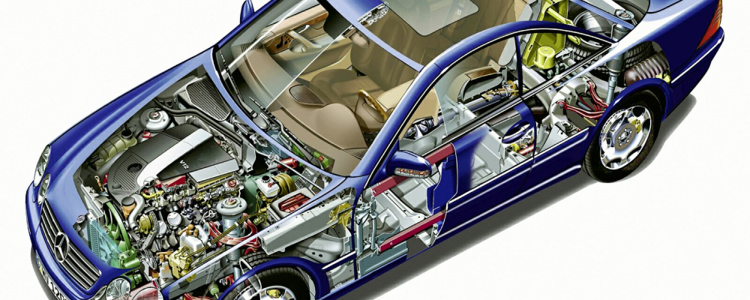Much has been written about how adhesives and sealants help automakers improve the performance, safety, and fuel economy of cars and light trucks. By helping to increase the strength, stiffness, and durability of a steel, aluminum, or multi-material vehicle body, adhesives and sealants can help manufactures make cars that are fun to drive, while meeting federal fuel economy and safety standards. What has not been discussed as frequently is how adhesives and sealants are used to make vehicles more aesthetically appealing to consumers. Adhesives and sealants enablerefined and elegant design in the vehicle interior and exterior by joining dissimilar materials to create desired effects. Since vehicle appearance attracts buyers and influences perceived vehicle quality, adhesives and sealants play an important role in both sales and brand equity. It is yet another reason that adhesive selection decisions are made very cautiously and deliberately by the automotive industry. The vehicle interior is where the buyer spends time and interacts with the car. For that reason, vehicle manufacturers go to great lengths to make sure the front seat passengers, who have the greatest influence on the purchase decision, enjoy a comfortable and well-appointed cabin. This includes the use of a wide variety of materials selected to appeal to occupants’ senses of sight, touch, and smell, for applications such as the dash, console, door lining, and roof lining. In order to bring these materials together in an economical yet aesthetically pleasing way, interior surfaces are multi-layer constructions. Each layer provides a specific function; a base layer to provide strength and rigidity, a middle layer to provide tactility, and a top layer to provide the desired appearance. These materials can be co-molded, but adhesives are often used to create a lasting bond between layers. Polyurethane dispersions and various hot melt adhesives are used for manufacture of laminates, which create a structure that will last the life of the vehicle while being exposed to temperatures that can range from well below zero to over 200F in a closed car on a hot day. Adhesives also provide critical functions to the growing array of electronics that are rapidly becoming ubiquitous in automotive interiors. As screens and electronic displays become the primary user-machine interface, the appearance, durability, and usability of screens is a driver of owner satisfaction. Unlike consumer electronics, such as mobile phones, that are normally carried with a user, kept in comfortable environments, and have a normal life span of a few years, electronics in cars often sit outside and are exposed to temperature extremes on a regular basis, yet are expected to last over a decade and still function flawlessly. The type of adhesive that is used to bond the screen plays a primary role in both the clarity and durability of the device, making adhesive selection an important consideration in vehicle ownership experience. Exterior aesthetics are also very important to consumers, and are a primary draw to the vehicle showroom. However, achieving the desired aesthetic is often a compromise between the desires of vehicle styling and the practicalities engineering, manufacturing, and regulatory realities. Vehicle stylists want smooth, uninterrupted surfaces with little or no gap between panels to provide the most appealing appearance to the consumer. Owners have become more comfortable with the quality of sunroofs and demand larger, panoramic roof systems. The use of adhesives and sealants, by themselves or in conjunction with welds and rivets, allow manufacturers to achieve these and other exterior effects, for example in roof construction. Adhesives and sealants allow for unique construction of roof panels on vehicles, or incorporation of materials such as aluminum, composite, or panoramic glass roof systems. The images below, taken from US patent filings, show examples of roof constructions with a weld channel and garnish (left) compared to a “zero-gap” attachment that uses a sealant instead of a garnish to prevent water intrusion. In addition to enabling a streamlined appearance, the use of a bulk-dispensed sealant eliminates tooling and production costs for garnishes, as well as the need to hold parts in inventory. Aesthetic appeal may seem like a secondary benefit offered by adhesives and sealants when compared to attributes such as safety and performance. However, manufacturers recognize that appearance is a primary factor in the purchase decision and is an indicator of perceived quality and brand prestige. Adhesives and sealants are instrumental in achieving desired interior and exterior vehicle aesthetics, as well as for maintaining vehicle quality over time.Therefore, the role of adhesives and sealants as a contributor to manufacturer brand equity cannot be understated, and in this light, the reasons manufacturers proceed deliberately and cautiously when approving new adhesive choices can be clearly understood.
